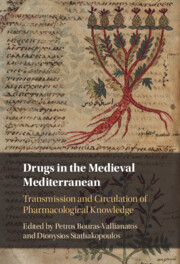Book contents
Part I - Transmission of Pharmacological Knowledge
Texts and Contexts
Published online by Cambridge University Press: 19 October 2023
Summary

- Type
- Chapter
- Information
- Drugs in the Medieval MediterraneanTransmission and Circulation of Pharmacological Knowledge, pp. 35 - 242Publisher: Cambridge University PressPrint publication year: 2023



